

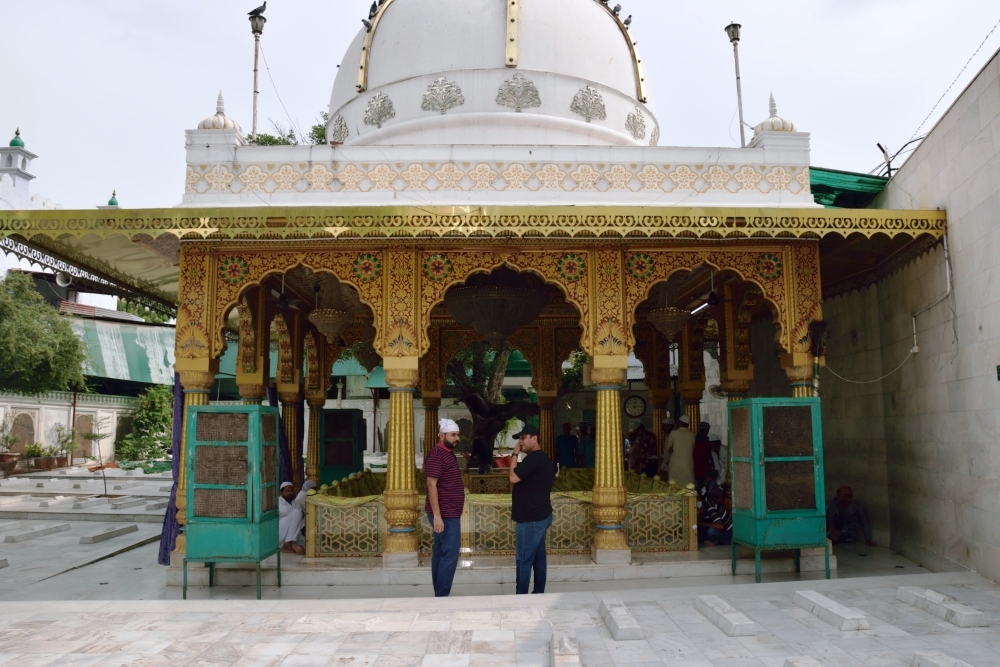
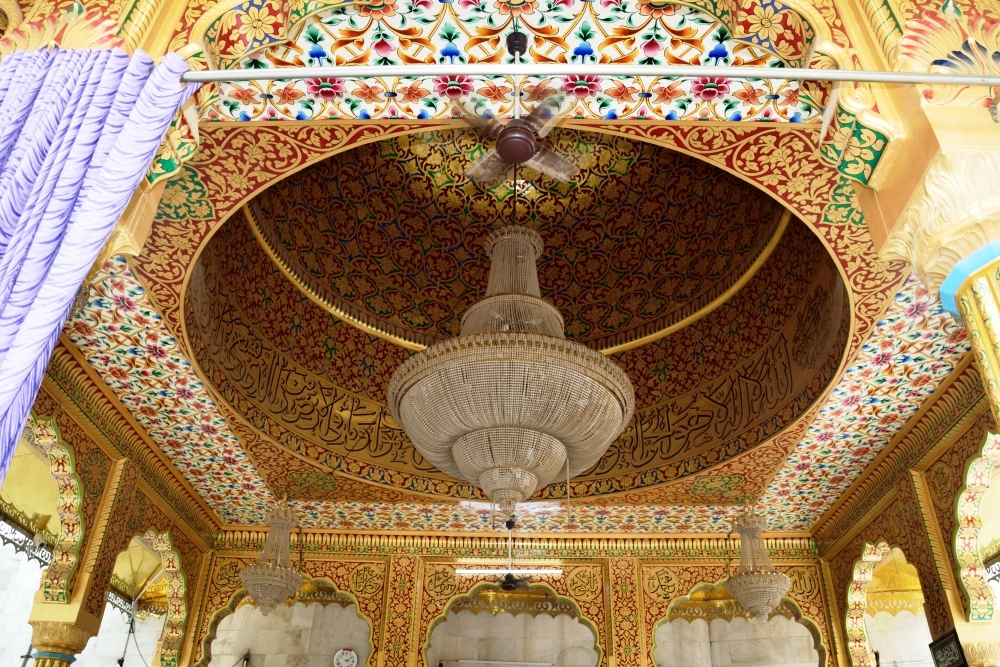
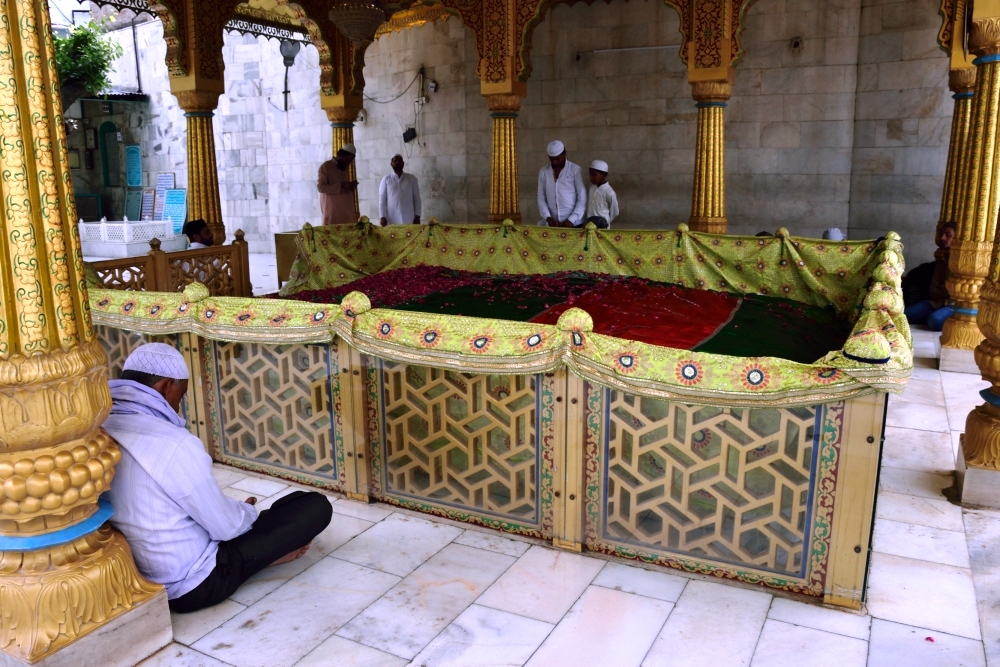
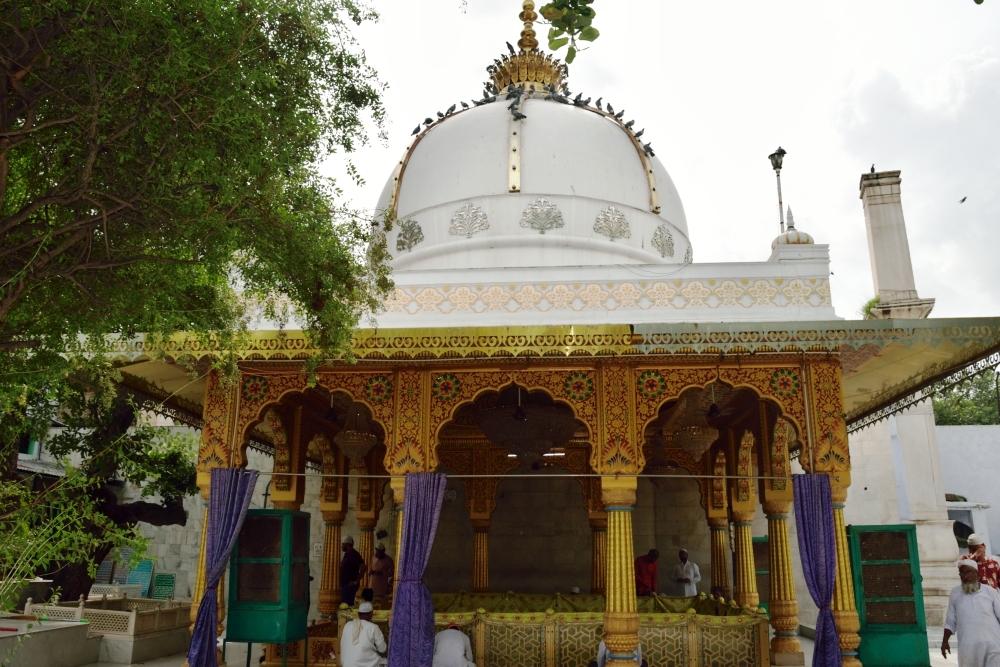
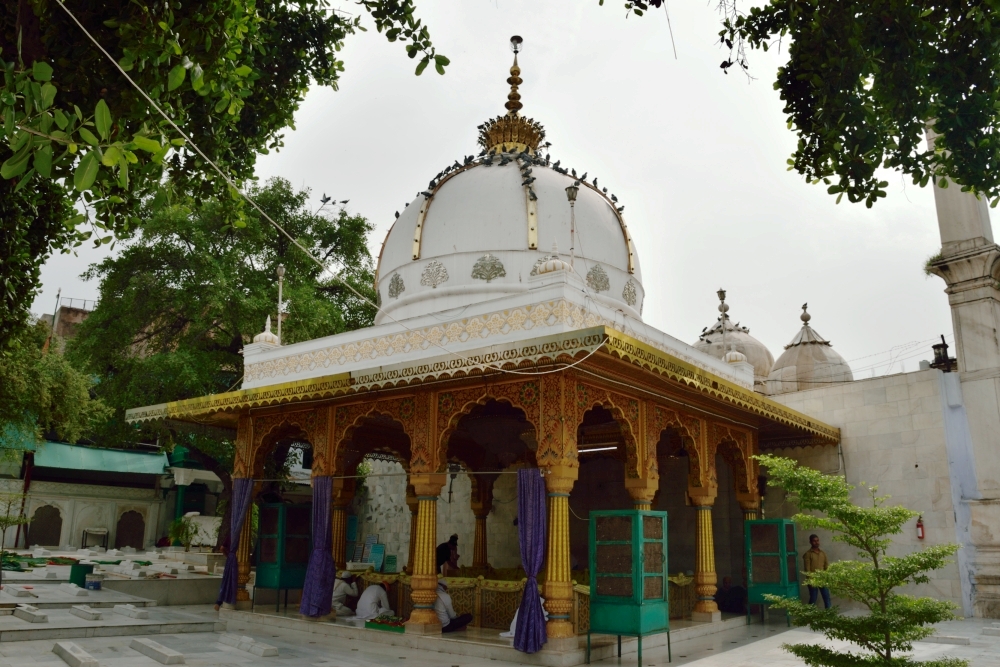
Approach: Approximately 250 meters southwest of Mehrauli Bus Stand and about 1.7 km northwest of Qutub Minar Metro Station, immediately south of the Tomb of Qutub Sahib, Mehrauli. Airport: Indira Gandhi International (IGI) Airport Railway Station: Nizamuddin Railway Station Bus Station: Mehrauli Bus Stand
Qutbuddin Bakhtiyar Kaki was a revered Sufi saint, mystic, and scholar belonging to the Chishti order. He was a direct disciple and spiritual successor of Khwaja Moinuddin Chishti, playing a crucial role in spreading the Chishti order in and around Delhi. He lived during the reign of Shamsuddin Iltutmish, who was one of his most devoted disciples and held him in great esteem. The title "Kaki" is believed to have been derived from a local tradition, which states that the saint was miraculously fed small cakes (Kaki) by the legendary figure Khizr. Qutbuddin Bakhtiyar Kaki passed away on the 14th of Rabi-ul-Awwal in the year 634 A.H. His grave holds immense spiritual significance, as he is considered the greatest Chishti saint in India after his teacher, Khwaja Moinuddin Chishti of Ajmer. Due to his influence, the entire area surrounding his tomb has become a center of religious and historical importance, marked by numerous mosques and tombs. Local and Traditional Significance The Dargah of Qutbuddin Bakhtiyar Kaki is a highly sacred pilgrimage site, drawing devotees from various religious backgrounds. The shrine is particularly popular among locals, who visit daily to pay their respects. While it remains an active site of devotion throughout the week, Thursdays and Fridays hold special significance as the dargah hosts Qawwali nights and other spiritual gatherings. One of the most prominent events associated with the dargah is the annual Urs, a grand celebration commemorating the saint?s death anniversary. During the Urs, the entire shrine complex is adorned with flowers, sparkling decorations, and fairy lights, creating a deeply spiritual and festive atmosphere. Devotional Qawwali performances continue throughout the night, enhancing the mystical ambiance. The dargah is also linked to the famous Phool Walon Ki Sair festival, an age-old tradition where floral tributes are offered at both Hindu and Muslim religious sites, symbolizing communal harmony. Furthermore, there is a strong spiritual connection between the dargah of Qutbuddin Bakhtiyar Kaki and the Ajmer Sharif Dargah of Khwaja Moinuddin Chishti. It is a well-known belief among devotees that a pilgrimage to Ajmer is incomplete without first paying homage at Qutbuddin Kaki?s shrine. One of the unique traditions linked to the dargah is the Festival of Sticks (Chhadiyon ka Mela). Each year, about a month before the Urs celebrations of Khwaja Moinuddin Chishti, devotees begin assembling at the dargah of Qutbuddin Bakhtiyar Kaki. On the full moon night, they set out on a spiritual journey to Ajmer, carrying wooden sticks adorned with fluttering green flags. This practice symbolizes their devotion and spiritual connection between the two great Chishti saints. It is widely believed that the burial site of a revered saint sanctifies the surrounding area, and those buried nearby may gain easier passage to the afterlife. A deeply ingrained Sufi belief states that if a devotee makes a heartfelt wish and ties a thread near the saint?s tomb, their wish will be granted. Upon fulfillment of their desire, they must return to untie the thread as a gesture of gratitude. However, there are certain restrictions within the dargah. Women devotees are not allowed inside the courtyard where the saint?s tomb stands. Instead, they pray and seek blessings near the intricately carved white marble lattice screens (jali), which separate the visitors from the central courtyard. Architectural Style The dargah complex of Qutbuddin Bakhtiyar Kaki is a remarkable example of Khilji-era architecture, characterized by its grandeur, intricate ornamentation, and spiritual aesthetics. Description of the Structure The dargah complex is an interconnected structure with multiple passageways, leading through beautifully designed arched gateways into expansive courtyards. The shrine is enclosed within marble balustrades and is crowned by an elaborately decorated dome, supported by finely crafted ornamental pillars. The grave itself is housed within a rectangular enclosure measuring approximately 29.89 meters by 17.38 meters. On the eastern and northern sides, the structure is adorned with marble screens, consisting of alternating pierced and solid panels. The eastern wall contains eleven finely carved marble jali screens, allowing light to filter through in an ethereal manner. The central tomb, placed within a marble pavilion, measures approximately 4.5 meters by 5.15 meters. The pavilion is supported by twelve glittering fluted columns, adding to its elegance. The saint?s grave is covered with a large, colorful cloth, richly embroidered with sequins and vibrant beads, which are tied around the marble railings. The interior of the dome is particularly striking, featuring exquisite mirror work, vibrant calligraphy, and geometric patterns. The multi-foliated arch and its surrounding spandrels are embellished with intricate gold detailing. The corners of the shrine are topped with small cupolas, while the drum level of the dome is decorated with a Kalptaru plant design, crafted in fine silver work. The massive bulbous dome rises above the tomb, crowned with an impressive gilded finial, which resembles a blooming golden flower, symbolizing divine enlightenment. Materials Used in Construction The entire structure is primarily built using marble, lending it an aura of serenity and grandeur. The surfaces of the shrine are adorned with a dazzling array of colors, including glittering gold, deep blood red, shining silver, and radiant blue, creating a striking visual impact. The blend of intricate carvings, decorative elements, and the harmonious use of color makes the dargah a masterpiece of Indo-Islamic architecture. Overall, the dargah of Qutbuddin Bakhtiyar Kaki stands as a significant spiritual and architectural landmark in Delhi, continuing to attract devotees and history enthusiasts alike. Its deep-rooted Sufi traditions, historical relevance, and mesmerizing architectural beauty make it a cherished heritage site.
Year of Built: 13th - 14th Century
Address: Dargah of Qutub Sahib, Ward No-7, Mehrauli
Country: India
State: Delhi
District: South Delhi
Pincode: 110030
Longitude: 77 10 49
Latitude: 28 31 9